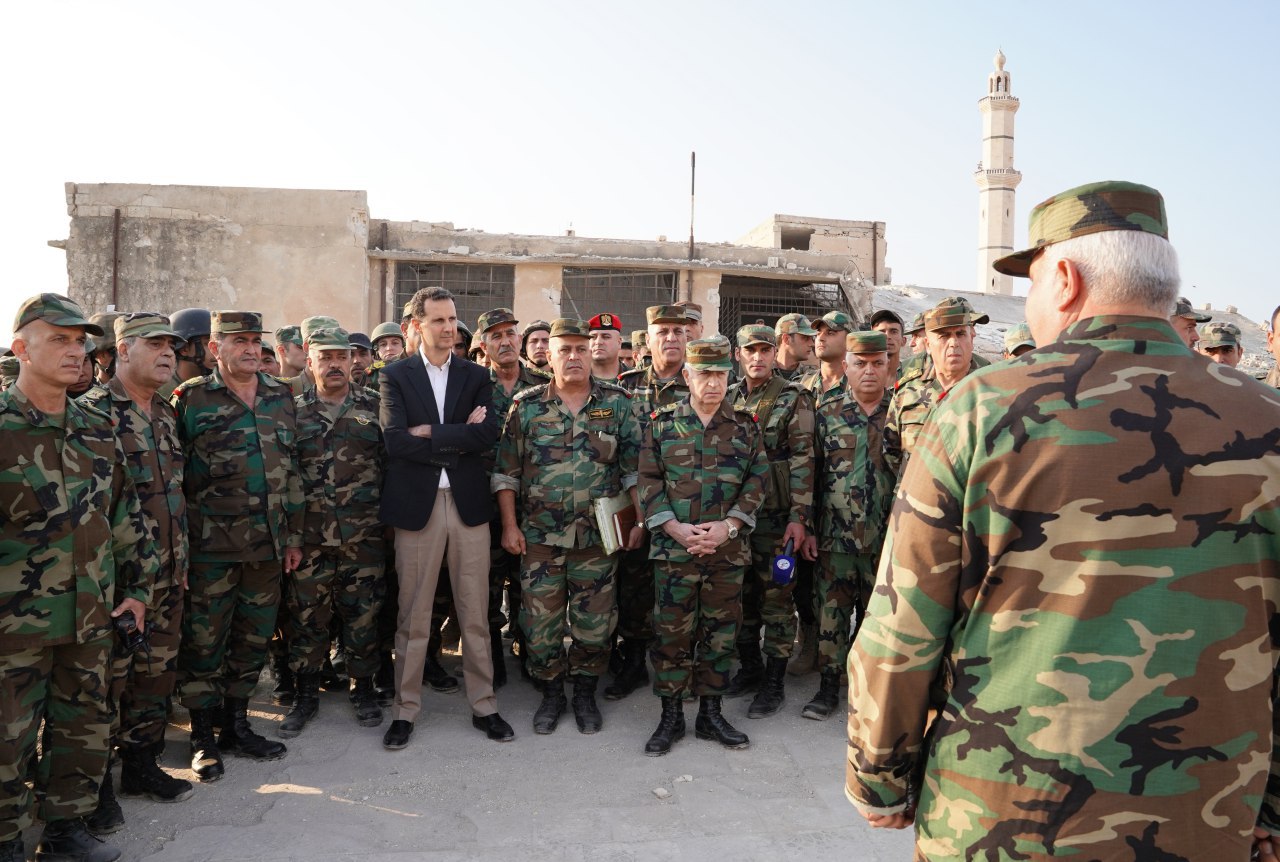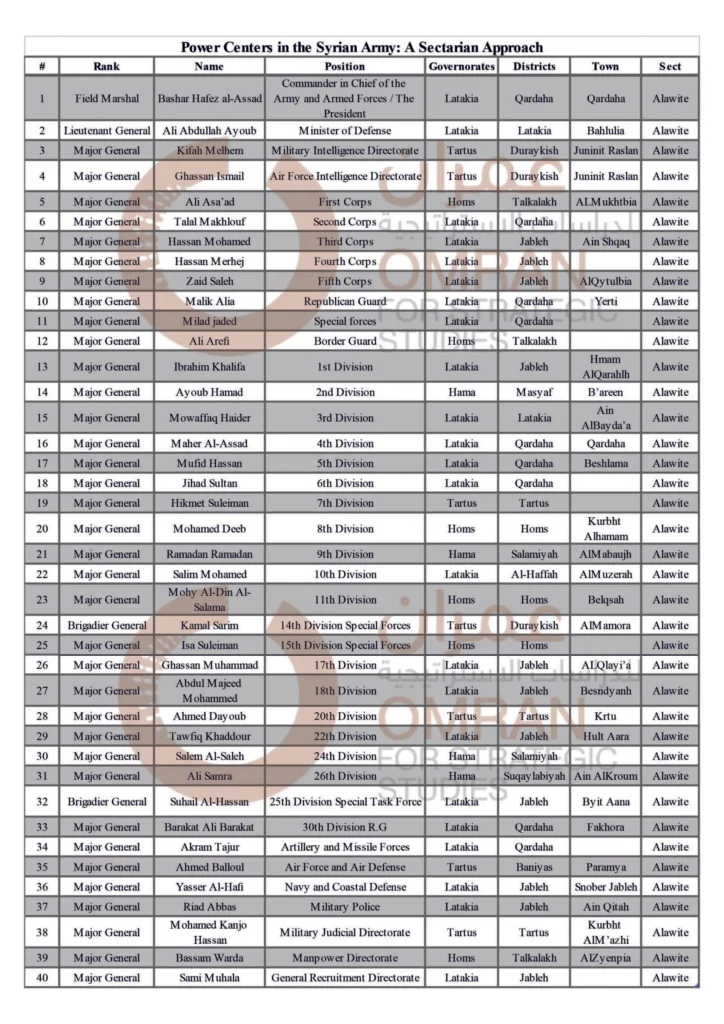
Power Centers in the Syrian Army 2020:A Sectarian Approach
Executive Summary
- Within the “Trinity of Leadership” approach which employed a sectarian balancing act, Hafez Al-Assad engineered the Syrian army’s centers of power in a manner that ensured loyalty to his regimes while preventing it from becoming a political tool against his authority. Post 2011 revolution, however, the sectarian engineering of the Syrian army tilted in favor of more Alawite officers assuming most leadership positions within the various layers of the army’s command.
- This paper examines the sectarian and territorial distribution of the most powerful 40 positions in the Syrian army as of March 2020. The paper concludes that those who occupy these sensitive positions are officers from the Alawite sect, including the Commander in Chief and the Minister of Defense, the commanders of the Military Corps, and the leaders of the intelligence branches of the Ministry of Defense.
- Latakia officers control 58% of leadership positions, Tartous officers control 17%, Homs officers 15%, while Hama officers control 10% out of these leading positions.
- There are undisclosed quotas between officers from Qardaha, Jableh, and Duraykish, where officers from Jableh command three corps and several powerful divisions. While Qardaha officers take command of a corps and an officer from Homs leads another corps.
- Qardaha officers take on the most powerful and varied of the military divisions. Whereas, two officers from the same village near Duraykish town, in the Tartous countryside, command the most powerful intelligence branches in Syria.
- The central powerful positions of the army are mainly occupied by officers from Latakia governorate, more specifically, from Jableh and Qardaha.
- For More in Arabic: http://bit.ly/39QaU42
The following table shows the sectarian and territorial distribution of the most powerful forty positions in the Syrian army nowadays. The table also contains the names and regions of those high ranking officers including the Commander in Chief, the Minister of Defense, the Corps commanders and leaders of the formations and military division, in addition to some security and sensitive leading positions within the Syrian army:

